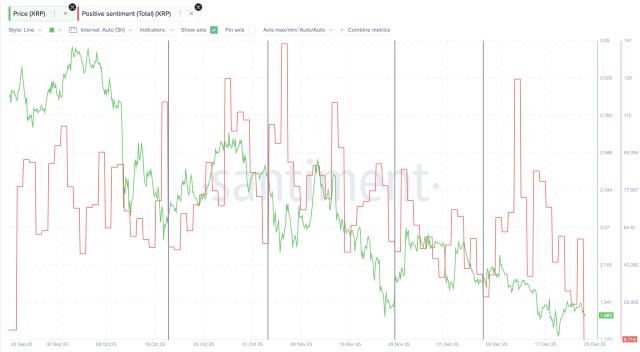Original | Odaily Planet Daily (@OdailyChina)
Author | Nanzi (@Assassin_Malvo)

In the previous articles "MEME Training Manual: Rebirth as a Diamond Hand (Part I)" and "MEME Training Manual: Rebirth as a Diamond Hand (Part II)", the author developed a "scoring method" for smart addresses, aiming to identify "diamond hand players" among these smart addresses and follow them, exploring whether following diamond hands can be a stable and profitable way.
Last week, the follow-up account experienced a significant drawdown. After the author's assessment, "trading frequency" and "overall profit and loss ratio" as the core evaluation factors are still not comprehensive enough and the granularity is too large. Therefore, a set of in-depth evaluation methods has been developed, and this article will disclose and review it, further sharing and discussing the follow-up system with readers.
Risk Warning: This system was launched on October 8th and has only been running for 21 days. Although certain achievements have been made, from an objective perspective, the data volume and control experiments are not sufficient, and the rigor is limited. It is for reference only. In addition, to ensure the objectivity of subsequent tests, this article will not disclose any addresses involved in the operation.
Reflection on Drawdown: Profit and Loss Are Ultimately the Same Source
Drawdown Scenario
Last week, there were four follow-up accounts in operation: Follow-up 1 to 4. Among them, Follow-up 1 and 2 were core accounts, following addresses that clearly met the system requirements, while Follow-up 3 and 4 adopted some aggressive strategies. During this period, Follow-up 1 and 2 also experienced significant drawdowns. The root causes are mainly:
High position, high frequency large-scale buy-ins: As mentioned in the second article, some addresses like to buy tokens multiple times when the market cap is in the millions to tens of millions of dollars, and do not set stop-loss, while these tokens are often only born for a few hours to a few days, with poor stability and certainty, resulting in extremely poor profit and loss ratios. A specific scenario that occurred was that a certain token was at a market cap of 11 million dollars, and the follow-up object made 20 consecutive buy-ins, while Follow-up 1 set a single buy-in amount of 0.8 SOL, buying a total of 16 SOL, and then the token plummeted to a market cap of 3 million dollars within a few hours, causing the largest single loss for the account.
Low position, high frequency, low win rate buy-ins: Some accounts are keen on buying during Pump or at market caps of hundreds of thousands, losing more than 10 trades and then "critically" profiting once. If these addresses persist in the strategy of no stop-loss and long-term holding of "large MC memecoins", they also meet the "diamond hand" requirements, but due to the price fluctuation problem at low positions, the profitability of the follow-up addresses will be significantly lower than the followed addresses, and the EV will be negative in the long run.
Getting to the Root of the Problem, What Should the Portrait of the Follow-up Object Be?
Therefore, the author has re-sorted out the portrait of the intended follow-up object to guide the upgrade of the evaluation system. The original text of the thinking logic is as follows:
What kind of address should we find? Addresses with not too many trades, holding for a long time, able to enter at the bottom rather than FOMO chasing highs, with good profit and loss ratios, not cutting people, and low drawdowns.
Which factor is most important to me?
Low drawdown is the first priority, so we need to find out the investment ratio in the worst-case scenario of losses, and how many consecutive losses before a big win;
Secondly, it needs to make money. In addition to the total profit and loss, we also need to calculate the details of the investment cost, and we don't want addresses that are "betting big to win small";
Not "betting big to win small" should also be reflected in the ability to enter at the bottom, by calculating the proportion of making money from low-position entries;
Low trading frequency should also be reflected in the low number of buy-ins;
Holding for a long time can be counted in the 4th point, and not cutting people as well.
In-Depth Evaluation System
Based on the above portrait requirements, the author has completed two additional in-depth evaluation systems, with details as follows:
Trade Position Evaluation: Betting Small to Win Big, Anti-FOMO
The idea of this system is, for each address:
Obtain its list of most profitable and most losing tokens;
Filter out tokens with profits or losses greater than a certain threshold, such as the author choosing profits greater than $5,000 and losses greater than $2,000;
Obtain the details of the first purchase, second purchase, etc. until the first sale of the address on that token;
Calculate the market cap of each purchase and the average purchase market cap;
Calculate the number of purchases before the first sale;
Calculate the total profit and total cost situation;
Calculate the holding time from the first purchase to the first sale.
The example of the statistical results is shown in the figure below. Through this table, we can get:
The "bottom buying" ability of each address, for example, the first 7 addresses can buy below 1 million dollars, and the profit and loss ratio is extremely high, only executing one or two trades;
The risk of "high position FOMO" losses, for example, the last address only enters when the market cap is around 20 million dollars, which is clearly not suitable for follow-up;
The ability to "bet small to win big", based on the profit part - average profit and loss ratio;
The stop-loss style, from the loss part - average profit and loss ratio, the closer to -1, the more this address dislikes stop-loss;
The "diamond hand" degree, from the average holding time.

Recent Trading Level Recap
The table obtained in the previous section reflects the historical top profit and loss situation of this address, but cannot reflect the recent trading level. On the other hand, the data provided by the data platform is not entirely accurate. The author's path to statistics "recent trading level" is as follows:
Obtain the 100 tokens recently traded by a certain address;
Exclude tokens not created by Pump;
Exclude tokens created more than 30 days ago;
Obtain the total profit and total loss of that token;
Calculate the win rate of the filtered tokens.
Follow-up System Data Report and Follow-up System Settings
Although it experienced a round of drawdowns, the stability of the upgraded system has improved significantly, and Follow-up 1 and 2 have now returned to ATH, while the strategies of Follow-up 3 and 4 have failed verification and have been liquidated.
Here, the follow-up object of Follow-up 3 is disclosed, which is the address "HdxkiXqeN 6 qpK 2 YbG 51 W 23 QSWj 3 Yygc 1 eEk 2 zwmKJExp", known as the "Alien Cat", which is a "well-known" address. Follow-up 3 was intended to test the profitability of such addresses, but the final test result was a loss and exit.

Data of each wallet as of 09:00 (UTC+8) on October 29, unit: SOL:

Follow-up Setting Details
The author uses the Dogee Bot, and the details of most follow-up addresses are as follows. The key points are:
Set a minimum follow-up amount to prevent the poisoning situation mentioned in the first and second articles;
Follow all buys, but in fact, it should be set separately based on the win rate and profit and loss ratio of the internal market.
The ultimate goal and core judgment factor of this system is to "buy at low prices and sell in batches at high prices", so it is necessary to choose to sell in proportion with the object being followed;
The market value is limited, and it is extremely difficult to profit from chasing high prices in terms of direct experience. Multiple addresses have set the market value limit to 10 million US dollars. But from the perspective of objective data, how is the profitability of the high-price chasing strategy? An article will be written specifically to reveal this in the near future.







